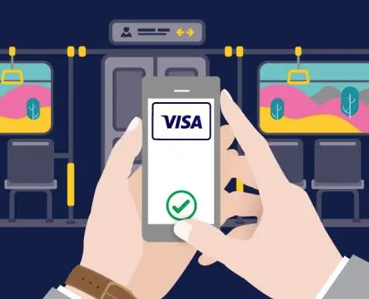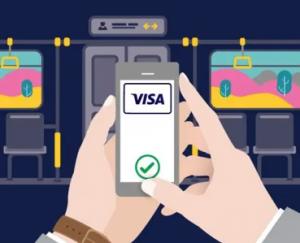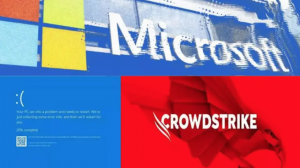Smart ticketing expands in Victoria and Queensland

Train commuters in Brisbane can now use ‘smart ticketing’ when travelling on the airport line, while Melbourne customers will see the introduction of a “best practice” system to replace Myki by the end of 2023.
QUEENSLAND
Since 2017, we have been following Queensland’s shift to ‘smart ticketing’ payments on public transport across the state. From the announcement, to first phase trials, and major expansions last year.
Now, the program has grown even further, expanding to the Brisbane Airport line.
Commuters travelling to and from the domestic and international terminals will be able to use the new service under the state government’s $371 million project, run in partnership with Cubic Transportation Systems.
 The news follows announcements that customers travelling between Central station and Cleveland station will have system access.
The news follows announcements that customers travelling between Central station and Cleveland station will have system access.

 Transport and Main Roads Minister, Mark Bailey, the said $371 million project continued to gather pace.
Transport and Main Roads Minister, Mark Bailey, the said $371 million project continued to gather pace.
“Delivering better public transport services for Queenslanders isn’t just about having more trains or buses, it’s also about making it easier for people to hop on and off without barriers,” Minister Bailey said.
“This trial allows adult customers to use their credit card, debit card, smartphone or smartwatch to pay for their train journey – meaning you don’t need to think before hoping on a train, you can just tap and go.”
The project aims to replace about 1,300 fixed devices and 12,000 onboard readers, to bring 18 different payment systems across the regional network together under one smart ticketing umbrella.
This also includes buses in South East Queensland.
Soon, there will be no need for Go Cards, which are used across the state by customers.
Queensland Rail moved to completely cashless payments during the pandemic period. Cash is not accepted as a form of payment.
Member for Lytton, Joan Pease, said she is “looking forward to seeing the rollout extend onto our local buses” in 2023.
The new payment system, which was introduced on the Gold Coast light rail network in 2018 (along with facial recognition cameras), is similar to the ones seen in locations like London and Singapore.
Following this new expansion, the service is operating along the Airport, Ferny Grove, Ipswich/Rosewood, Springfield Central, Sunshine Coast/Caboolture, Redcliffe Peninsula, Doomben, Shorncliffe and Cleveland train lines.
Next steps include expansions to the Beenleigh and Gold Coast train lines, connecting customers to the Gold Coast light rail.
The plan will eventually see citizens access public transport via facial and vein biometric recognition methods.
The Sunshine State is not alone in their ‘smart’ transformations of public transport.
VICTORIA
In Victoria, the Myki card represented state-of-the-art technology when it replaced paper tickets a decade or so ago.
It’s the ticketing system for travelling on trains, trams and buses in Melbourne, on trains from Melbourne to certain regional destinations, and on buses in major regional centres.
The Dan Andrews government recently announced that this will soon change, with the introduction of a “best practice” system that will replace Myki when its operator’s contract expires later this year.
 Moves had already been made towards this step.
Moves had already been made towards this step.
In 2019, the system was updated to allow direct payment for a trip using a digital Myki on Android phones, but not Apple phones.
The pandemic accelerated this trend towards a ‘need’ for a new system, because operators wanted to minimise contact points associated with either cash payments or buying a physical ticket or card.
So, what will the new system look like?
For one thing, the Myki terminals at public transport stations and on buses and trams use 3G wireless technology.
This wireless network is due to be shut down in June 2024.
Terminals will have to be updated to the 5G network:
 The term ‘Mobility as a Service’, or ‘MaaS’, is one of the emerging trends in public transport.
The term ‘Mobility as a Service’, or ‘MaaS’, is one of the emerging trends in public transport.
The goal is to allow users to have access to a range of transport options in a single app.
A centralised place where a profile can be created and payments linked to it.
Yes, you understand where this is going. Digital ID, social credit, high-speed rail and the end of private vehicle ownership.
It is all linked into the smart city agenda, which is directly linked to Agenda 2030.
As mentioned, biometric payments will be next, much like the “hands free” ticketing” ‘innovation’ being trialled in Singapore.
It uses radio frequency identification technology to detect a commuter’s fare card when passing through a sensor.
This will do away with the need for pausing to tap on with a phone, card or watch.
All of this is coming for Australia and it is coming fast.
Reminder: Sydney and Adelaide already have contactless payment systems in place.
Sydney has been planning to go further with biometrics already:
Sydney’s example is worth noting because, while upgrading to contactless payment options, it has maintained the use of the Opal card, as well as the option of buying a single-trip ticket.
Thus, Sydney has kept the payment options as broad as possible so as not to disadvantage any potential users.
Many systems lack this flexibility — particularly those that have gone contactless and cashless.
Brisbane and Melbourne will not be keeping their cards over time.
Source:https://tottnews.com/2023/03/15/smart-ticketing-victoria-and-queensland/








